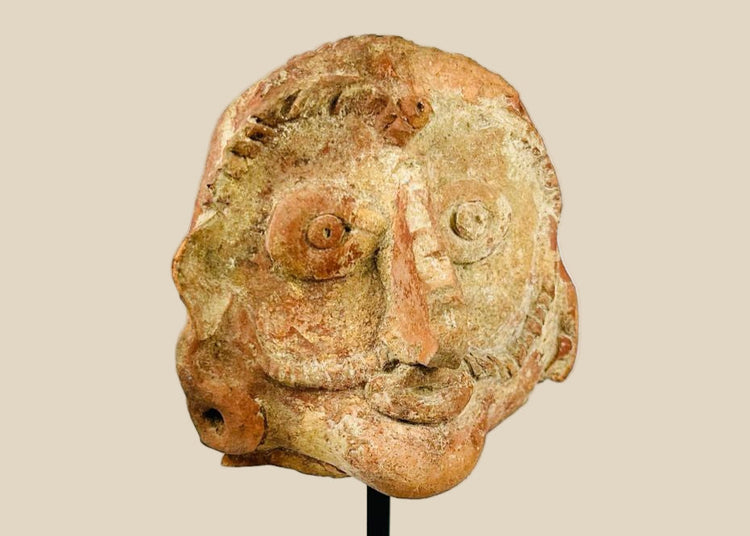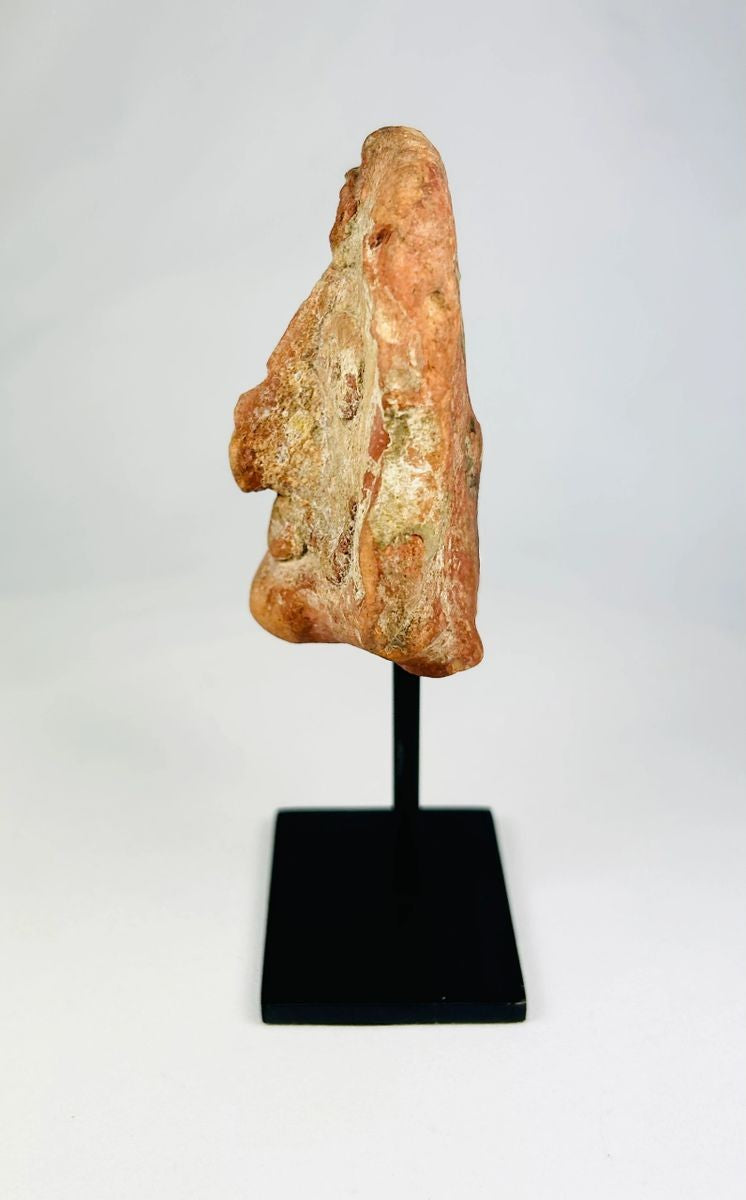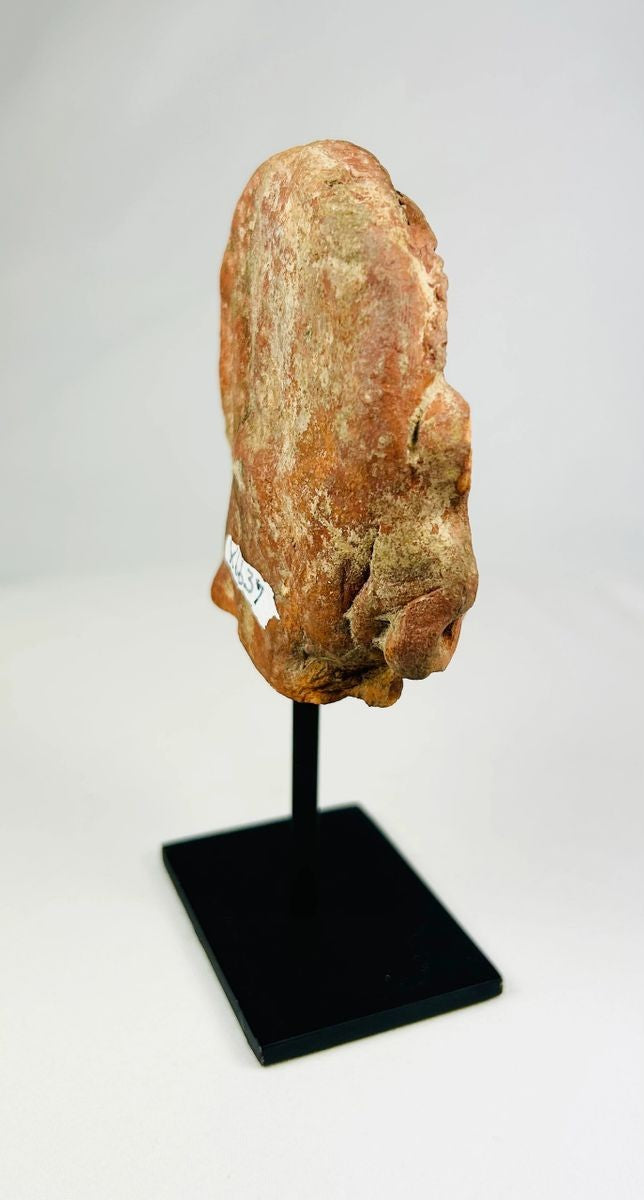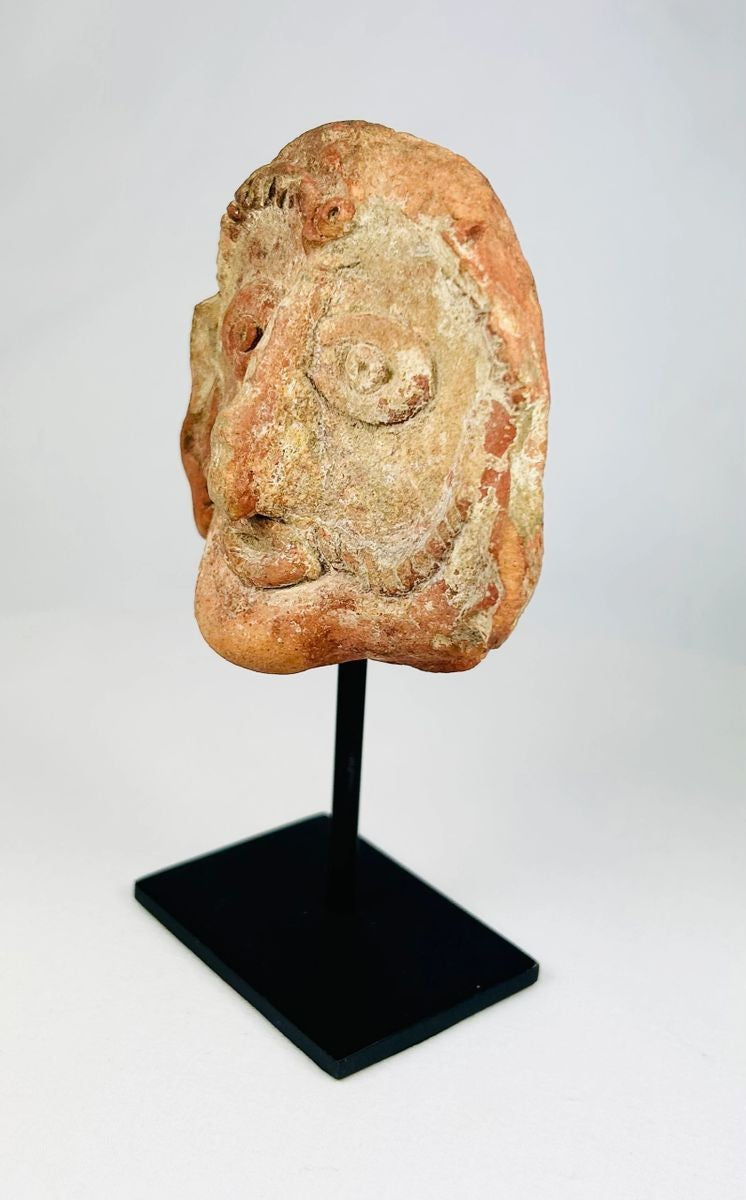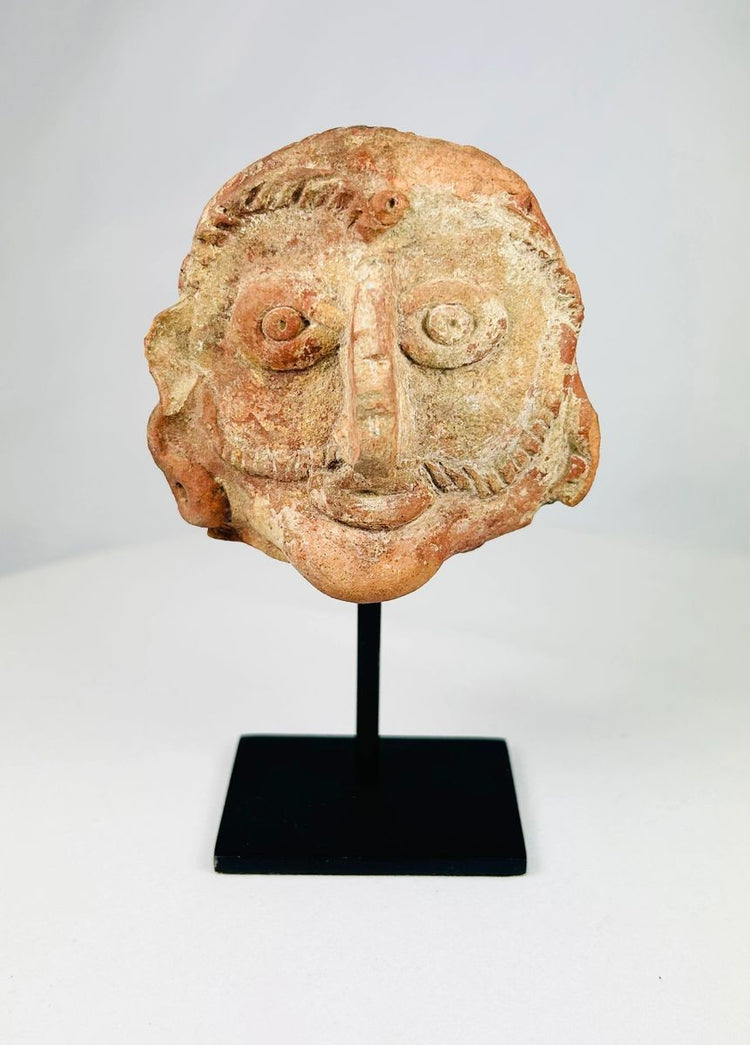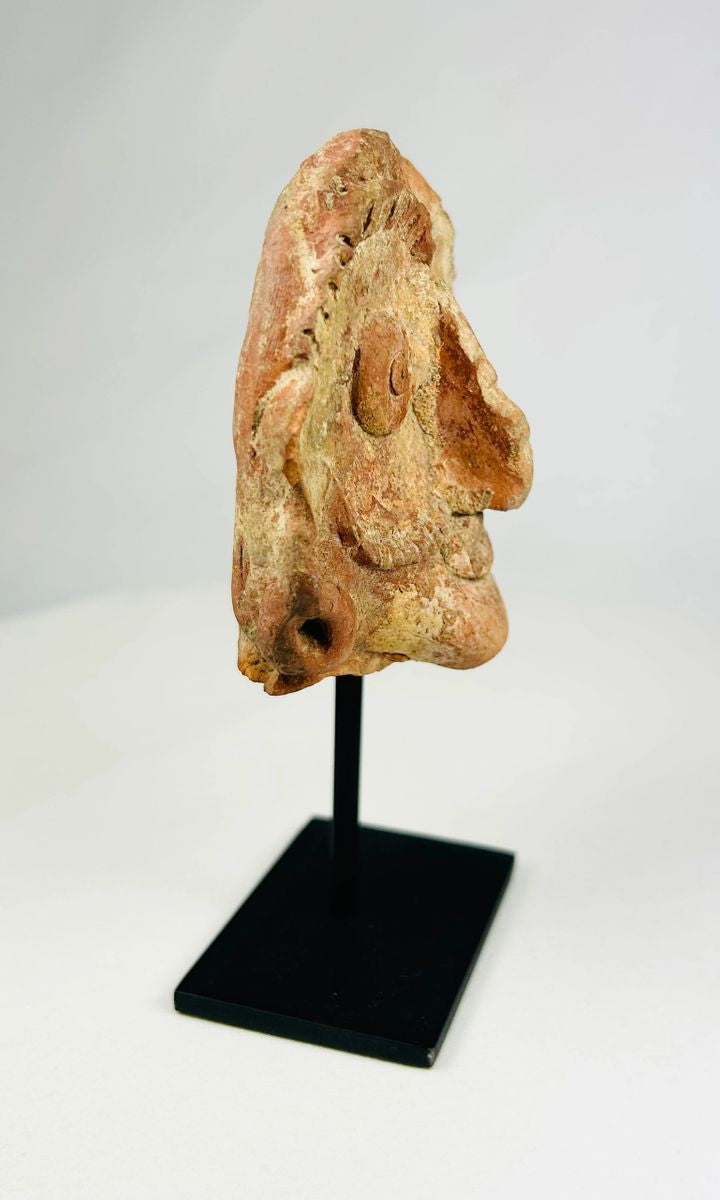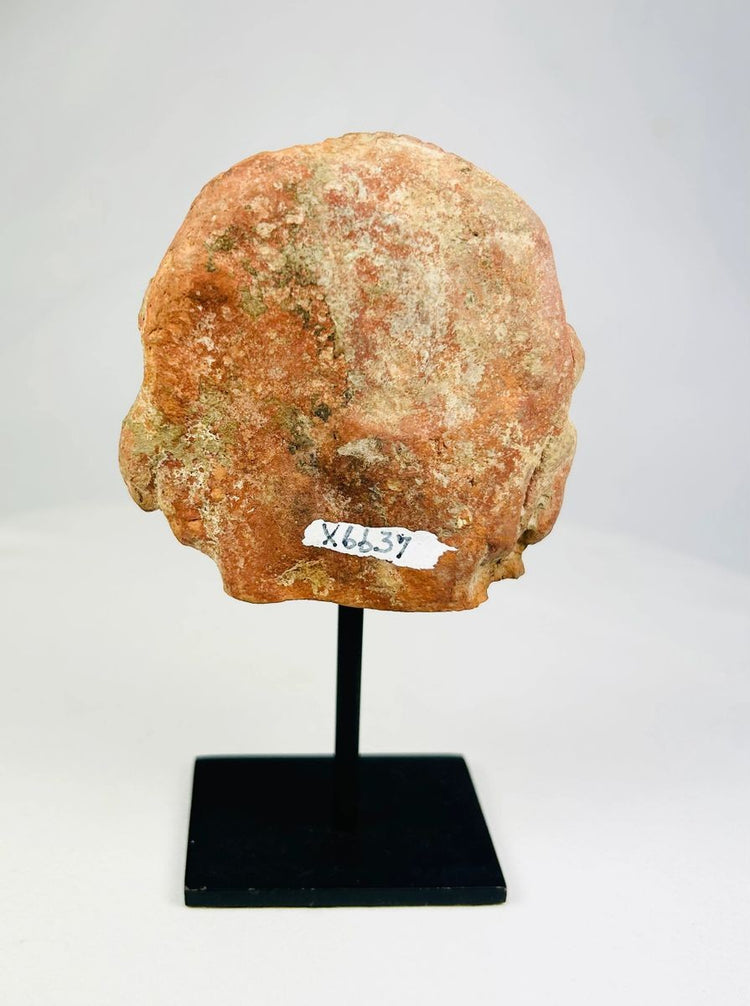Ancient Indian Terracotta Head | Shunga Period Red Clay Sculpture | Circa 2nd–1st Century BCE
Description
More
Less
Historical Context & Origin
Region: Ancient India
Material: Red terracotta
Period: Shunga Period, circa 2nd–1st Century BCE
Description
This terracotta head is an exquisite example of Shunga artistry, reflecting the cultural and religious vitality of ancient India during the 2nd–1st century BCE. The Shunga period was renowned for its advancements in sculpture, pottery, and religious iconography, with artists creating increasingly naturalistic forms. The finely modeled facial features—prominent eyes, a pronounced nose, and delicate stylistic details—exemplify this transition toward realism and sophistication in Indian art. Likely used for decorative or votive purposes, this piece embodies both the aesthetic refinement and spiritual expression of the age.
Features
- Hand-crafted from red terracotta, prized for its versatility and fine detail capture
- Prominent, naturalistic facial features including expressive eyes and a strong nose
- Subtle stylization reflecting the Shunga blend of realism and symbolic representation
- Possible ceremonial or votive function, aligning with known religious practices of the period
Cultural Significance
The Shunga dynasty fostered an era of immense cultural growth, particularly in the arts. Terracotta figures and heads like this one were integral to both domestic and sacred spaces, serving as offerings, decorative elements, or embodiments of religious devotion. This head provides valuable insight into early Indian sculptural traditions, illustrating the shift toward lifelike representation while maintaining symbolic depth.
Condition
The piece is well-preserved, with minor surface abrasions consistent with its age. A natural patina has developed, confirming both antiquity and authenticity while enhancing its visual depth.
Dimensions (approximate)
Height: 4.5 in
Age
Circa 2nd–1st Century BCE (Shunga Period)
Description
Historical Context & Origin
Region: Ancient India
Material: Red terracotta
Period: Shunga Period, circa 2nd–1st Century BCE
Description
This terracotta head is an exquisite example of Shunga artistry, reflecting the cultural and religious vitality of ancient India during the 2nd–1st century BCE. The Shunga period was renowned for its advancements in sculpture, pottery, and religious iconography, with artists creating increasingly naturalistic forms. The finely modeled facial features—prominent eyes, a pronounced nose, and delicate stylistic details—exemplify this transition toward realism and sophistication in Indian art. Likely used for decorative or votive purposes, this piece embodies both the aesthetic refinement and spiritual expression of the age.
Features
- Hand-crafted from red terracotta, prized for its versatility and fine detail capture
- Prominent, naturalistic facial features including expressive eyes and a strong nose
- Subtle stylization reflecting the Shunga blend of realism and symbolic representation
- Possible ceremonial or votive function, aligning with known religious practices of the period
Cultural Significance
The Shunga dynasty fostered an era of immense cultural growth, particularly in the arts. Terracotta figures and heads like this one were integral to both domestic and sacred spaces, serving as offerings, decorative elements, or embodiments of religious devotion. This head provides valuable insight into early Indian sculptural traditions, illustrating the shift toward lifelike representation while maintaining symbolic depth.
Condition
The piece is well-preserved, with minor surface abrasions consistent with its age. A natural patina has developed, confirming both antiquity and authenticity while enhancing its visual depth.
Dimensions (approximate)
Height: 4.5 in
Age
Circa 2nd–1st Century BCE (Shunga Period)
You May Also Like




















